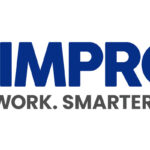If using unshielded cables, keep them away from any source of EMI such as other cables, transformers and light fixtures. In high RF environments, it is best to use shielded cables.
The same applies to shielded connectors. In a shielded connector, the signal pins are surrounded by a metal shield, and further reduce electromagnetic interference. Shielded connectors provide a better fit and therefore better performance.
6. Thou shalt mind your distances carefully.
HDBaseT delivers the 5Play feature set over 100m/328 ft. One of the factors that affects distance is the quality of the cable used, the working environment, and the video resolution expected. Higher quality cable will keep the signal better than low quality cable over distances. A noise-free environment will deliver better performance over the distance than a noisy or EMI-prone environment. Some HDBaseT equipment allows for Long Reach connectivity – 150m/492ft – for lower resolutions of 720p.
7. Thou shalt not use patch cords unnecessarily.
If possible, avoid patch cords or cables altogether, as every connection introduces losses in the transmission. If absolutely necessary, make sure to use less than two per cable run and keep each less than five meters from the end.
8. Thou shalt terminate carefully.
One of the advantages of HDBaseT’s using of LAN cables is that they are easily field terminated. That means there is no need to pre-measure cables and bring all the set-up ready ahead of time, saving time and money. Make sure to use proper equipment for termination, such as cable strippers, electrician scissors, and crimpers.
Related: 7 Super-Scary Wiring Scenarios
Also, make sure that both ends of the cable are wired according to the same scheme, either T568A or T568B. Never use both in the same installation. It is also recommended to check with HDBaseT manufacturers which scheme their products are optimized and equalized for, to take full advantage of the expected performance.
9. Thou shalt be thorough and test, test, test.
Testing is crucial to guarantee both cable quality and signal integrity. Pre-testing can save hours and resources from troubleshooting any issue ahead of time. During and after installation, a professional test equipment will check connections and transmission of the installed infrastructure, beyond broken or mismatched wires, but also any hidden issues that may cause interference or loss of signal. Make sure to test every cable as it is installed and terminated, to identify individual problems as the installation goes.
10. Thou shalt be organized.
Document and label all cabling components to facilitate any upgrades or expansions later, including diagrams. Remove any abandoned cables to prevent accidents or fire hazards. Avoid routing cables through pipes and holes, which may limit additional future cable runs.
Article is provided courtesy of HDBaseT.org.













